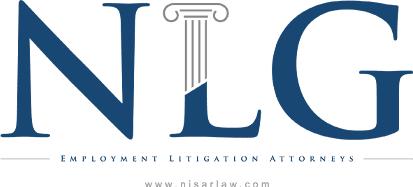
Sexual Harassment
Fighting For Your Best Interest
Sexual Harassment Attorney NYC
Treated Inappropriately at Work? Call (646) 760-6493 Today.
At Nisar Law Group, P.C., our New York sexual harassment lawyers bring a thorough knowledge of discrimination laws and employment litigation to each case, giving employees who've been sexually harassed a significant advantage during the negotiation and litigation processes.
Call (646) 760-6493 to discuss your options during an initial consultation with an attorney.
What Constitutes Sexual Harassment?
The following are examples of what could be considered sexual harassment in the workplace:
- Making inappropriate jokes about sex or gender
- Repeatedly flirting with a coworker
- Sending or sharing lewd imagery at work or in a work-related forum
Many cases do not involve a coworker but instead a business owner or executive. If you were victimized by a co-worker or boss, contact our attorneys for experienced representation.
Companies might be accused of sexual harassment or discrimination if:
- One sex or gender is routinely paid less than the average amount
- Hiring practices seem to favor one sex or gender
- Firing members of one sex or gender
- Not preventing or penalizing sexual harassment between employees
It is also important to note that sexual harassment does not need to include two members of the opposite sex or gender. Federal law states that sexual harassment and discrimination can occur between any two people. For example, a woman who makes inappropriate comments about a female coworker’s appearance has still committed sexual harassment in the workplace.
Steps to Take if You've Experienced Sexual Harassment at Work
Experiencing sexual harassment at work can be traumatic and overwhelming. It's important to know that you have legal rights and options to protect yourself.
Here are some important steps to take if you've experienced sexual harassment:
- Report the harassment: Notify your employer or HR department immediately. Make sure to document the incident(s) and any response you receive.
- Seek support: Talk to a trusted friend, family member, or counselor about what you're going through. It's important to take care of your mental and emotional health.
- File a complaint: If your employer doesn't take action to address the harassment, you can file a complaint with the Equal Employment Opportunity Commission (EEOC) or your state's labor department.
- Hire an attorney: A sexual harassment attorney can help you navigate the legal process and advocate for your rights. They can also help you pursue compensation for any damages you've suffered.
At Nisar Law Group, P.C., we understand how difficult it can be to speak out about sexual harassment. Our experienced attorneys are here to support you every step of the way. Contact us today to schedule a consultation.
Related Reading
- Can a Civil Servant be Fired for Sexual Harassment?
- The Legal Aftermath of the Sexual Harassment Scandals
Giving You the Legal Edge You Need
Take legal action today by preparing your case with a sexual harassment attorney in New York City. You can contact our firm online at any time to request an initial case evaluation.
Why We're the Right Choice
-
Seasoned Litigators Who Have Handled Numerous Jury & Bench Trials
-
Providing Representation with Clarity, Honesty & Integrity
-
Building Long-Term Affiliations & Relationships
-
Offering Consultations for All Case Types We Handle

-
In good hands!
After 2 years of suffering abuse and discrimination by my bosses, I finally decided to trust Lawyer Nisar to help me gain justice against their abuse.
- Maria -
Able to resolve my case in just 4 months.
Great attorneys to work with. They were upfront with my scenarios and stayed on top of the matter I had with my employer.
- Lidia -
Took his time to listen to everything I had to say.
Listened to everything I had to say and then asked me questions regarding my situation. He really took his time to listen to everything I had to say.
- Bibi


